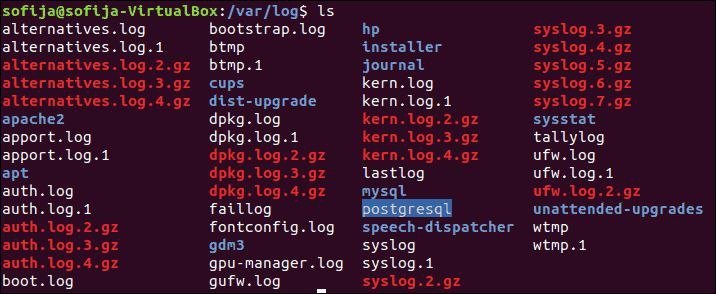-
United Kingdom+44 (20) 4577-20-00
-
USA+1 (929) 431-18-18
-
Israel+972 (55) 507-70-81
-
Brazil+55 (61) 3772-18-88
-
Canada+1 (416) 850-13-33
-
Czech Republic+420 (736) 353-668
-
Estonia+372 (53) 683-380
-
Greece+30 (800) 000-02-04
-
Ireland+353 (1) 699-43-88
-
Iceland+354 (53) 952-99
-
Lithuania+370 (700) 660-08
-
Netherlands+31 (970) 1027-77-87
-
Portugal+351 (800) 180-09-04
-
Romania+40 (376) 300-641
-
Sweden+46 (79) 008-11-99
-
Slovakia+421 (2) 333-004-23
-
Switzerland+41 (22) 508-77-76
-
Moldova+373 (699) 33-1-22
 English
English
What are Log files in Linux
- Main
- Knowledge base
- What are Log files in Linux
Log files (or logs) in Linux are text files that record events and messages that occur on a system or applications. They are used to monitor, diagnose, and analyze system performance.
What information do they contain?

Log files can contain information аbout:
- System events: records of system startup, errors, warnings, and other events related to kernel and service operation.
- Application activity: messages from various programs, including errors, warnings, and informational messages.
- Security: records of logins, access attempts, and other security-related activities.
The main log files in Linux are
/var/log/syslogor/var/log/messages: General system messages./var/log/auth.log: Records of authentication events (logins,sudousage, etc.)./var/log/kern.log: Kernelmessages./var/log/dpkg.log: Records of package installation and removal (for Debian-based systems)./var/log/apache2/: Apache web server logs (if installed)./var/log/mysql/: MySQL database logs (if installed).
How to work with log files
Viewing logs: You can use cat, less, more, tail and other commands to view the contents of the log files.
tail -f /var/log/syslogThis command will display the latest lines of the file and update the output in real time.
Filtering and searching: The grep command allows you to search for specific lines in the logs.
grep "error" /var/log/syslogLog rotation: Logs can take up a lot of disk space, so log rotation (e.g. using the logrotate utility) is used to archive old logs and free up space. Log files are an important tool for system administrators and developers to track system health and troubleshoot problems.
How do I create a log file?
Creating a log file in Linux can be accomplished in several ways, depending on how you want to record the information.
Using the echo command
You can create a log file and write data to it by using the echo command and redirecting the output:
echo "This message will be recorded in a log file" >> /path/to/your/logfile.log
>> adds text to the end of the file. If the file does not exist, it will be created.To overwrite the file, use single >.
Using the tee command
The tee command allows you to write the output of a command to a file and display it in the terminal at the same time:
echo "This message will be recorded in a log file" | tee -a /path/to/your/logfile.logThe -a flag means "append" to avoid overwriting the file.
Creating a log file using a script
You can create a script in Bash that will write messages to a log file:
#!/bin/bash
LOGFILE="/path/to/your/logfile.log"
echo "$(date): Running the script" >> "$LOGFILE"
# Your code is here
echo "$(date): Script Completion" >> "$LOGFILE"Save this code to a file, such as myscript.sh, and make it executable:
chmod +x myscript.shThen run it:
./myscript.shUsing system logs
If you want to write logs to system logs such as syslog, you can use the logger command:
logger "This message will be recorded in the system log"This will write this message to /var/log/syslog or the appropriate log file depending on your system configuration.
Using programming languages
If you are writing a program in languages such as Python, you can use built-in libraries to handle logging:
import logging
logging.basicConfig(filename='/path/to/your/logfile.log', level=logging.DEBUG)
logging.debug('This is a debugging message')
logging.info('This is an informational message')
logging.warning('This is a warning')
logging.error('This is an error message')
logging.critical('This is a critical message')These methods will allow you to create and manage log files in Linux depending on your needs.






































